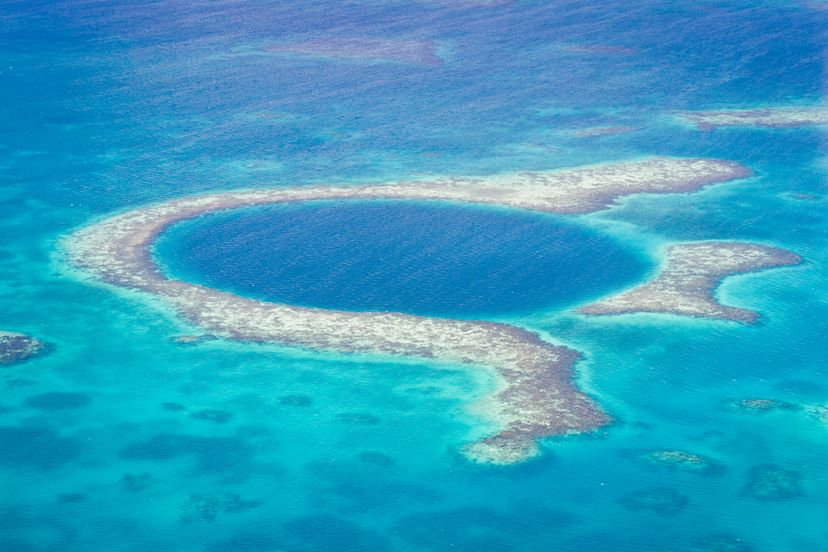
Scuba diving is a popular recreational activity among adventure seekers worldwide. The isolation, serenity, and calm of the dark quiet waters offer an unusual escape from the world above. Many recreational divers are quite content to remain at shallow levels exploring reefs and other interesting sea life. Some dive enthusiasts will attest to the desire to dive deeper to chart new unexplored places underwater and see things that have never been seen before. It’s this very desire that drives divers to take on some terrifying and dangerous challenges like the ones featured here.
Advertisement
10. Jacob’s Well (Wimberley, Texas)
On the surface, Jacob’s Well located southwest of Austin Texas just looks like your average backcountry swimming hole. Below the surface, there’s an entirely different story. A deep network of at least 4 main chambers offers some of the most dangerous cave diving in the world. Diving to the first and second chambers isn’t usually a problem, except for a few tight passageways. It’s the loose gravel and small space of the network’s third chamber that has caused many problems. Once gravel and silt are stirred up it’s almost impossible for divers to know which way to go causing them to panic and use up their air tanks faster. At least 8 people have sadly lost their lives in these chambers.
9. Coco’s Island (Costa Rica)
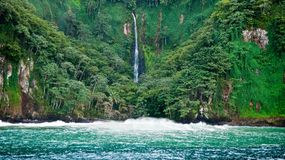
One of the main reasons this Costa Rican diving destination is so dangerous is its remote location. The Island which is entirely designated as a National Park lies 340 miles off the Pacific coast of the country and takes over 35 hours by boat to get to. The other reason for its dangerous reputation is the high number of sharks in the waters around the island. The many species of sharks including hammerhead and white tip reef sharks as well as giant manta rays, dolphins, and sea turtles are the main attraction for divers from all over the world.
8. Blue Hole (Lighthouse Reef, Belize)
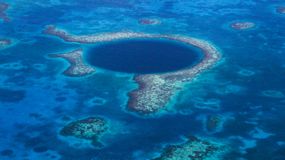
The Blue Hole in Lighthouse Reef off the coast of Belize offers beautiful clear waters, marine wildlife, and some of the deepest diving around. With a depth of 407ft, divers who visit this site push to challenge themselves and go deeper, trying to see things previously unexplored. This is where the danger sets in. The walls of the hole are sheer until a depth of 110ft after which, divers will encounter jagged stalactite formations on the hole’s limestone walls. In 2012, the Blue Hole in Belize was named #1 on Discovery Channel’s “The 10 Most Amazing Places on Earth”.
7. Cenote Esqueleto (Tulum, Mexico)
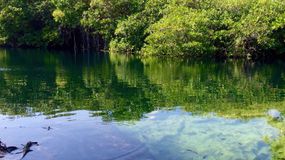
Cenote Esqueleto or more commonly known as “Temple of Doom” is another popular and dangerous cave diving site. This one lies just beyond the famous Tulum Ruins in Mexico’s Yucatan peninsula. This site features numerous caverns and tight passageways which can all spell danger even for experienced divers. There’s no ladder down into the cave network so the only way down is to just jump right in. Once below it’s easy to get disorientated, lost, and run out of air down here, as was the case for a father and son dive team in 1996.
Advertisement
6. Devil’s Caves (Ginnie Springs, Florida)
Ginnie Springs is a popular cave diving destination about 35 miles northwest of Gainsville Florida. The temperatures in these crystal clear waters are a balmy 72 degrees Fahrenheit year-round removing the need for a thick wetsuit. Little Devil, Devil’s Eye, and Devil’s Ear are the most notable and dangerous sites in the springs. Beware, this serene-looking spring has a very deceptive and strong flowing current, making for some dangerous diving. Especially at the vortex opening to the Devil’s Ear where divers gear is often shifted around.
5. German U Boat (New Jersey)
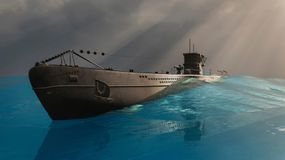
60 miles off the coast of New Jersey lies a remarkable World War II relic, a German U boat that was first discovered in 1991 by an American diver who had learned about the vessel’s possible location. The remains of U-869 were discovered at a depth of 240ft (73m) which is a dangerous depth for any diver. 3 Divers involved in the discovery of the boat actually died while exploring the area soon after it was found. The deep depths coupled with cold water temperatures and strong currents all make this an extremely dangerous dive spot.
4. The Shaft Sinkhole (Mount Gambier, Australia)
Mount Gambier in South Australia is home to some of the best (and most dangerous) cave diving around. The area is full of freshwater lakes, caves, caverns, and sinkholes that tempt brave adventure divers from around the world. The Shaft is a notorious sinkhole dive spot aptly named as the entrance is a tiny manhole that leads to a 25ft descent to the water. Beneath this long, dark entrance lies a huge network of clear water passageways. Unfortunately, there have been many fatalities in this dive site due to its depth and complexity.
3. Eagle’s Nest Sinkhole (Weeki Wachee, Florida)
Another dangerous dive spot in the Sunshine State is Eagle’s Nest Sinkhole. Located in the remote western area of Weeki Wachee, this site is reportedly 1035ft (315m) in-depth, making it dangerous for even the most skilled divers. The deeper scuba divers go, the more they start to experience Nitrogen Narcosis which causes them to experience a sense of euphoria and disorientation which can cause divers to lose track of their tank levels or become lost. Such has been the case at this Florida dive spot where several divers have lost their lives pushing the limits.
2. Samaesan Hole (Samae San Islands, Thailand)
Samaesan Hole in the Gulf of Thailand is a popular deep diving spot. It’s also a very dangerous one for a few different reasons; first of all, the depth. At 280ft (85m) this should only be attempted by deep dive professionals with all the right equipment. Another danger is the strong currents of this dive area. One diver recounts a time where he surfaced from his dive miles away from the hole and had to be rescued by a passing deep-sea trawler. The last and maybe most dangerous aspect of the Samaesan Hole are the unexploded bombs littering the sea bed all around this area as the site is a former military explosive dumping ground.
Advertisement
1. Blue Hole (Dahab, Red Sea)
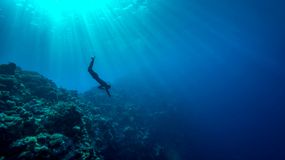
The notoriety of this dive site amongst the diving community gives it the top spot on the list. It’s also earned the title of “World’s Most Dangerous Dive Site” because of the high number of fatalities that have occurred here, giving it the ominous nickname “Divers Cemetery”. The Blue Hole itself is a submarine sinkhole approximately 463ft (130m) deep. The draw of this treacherous dive site is reaching “The Arch” which divers can swim through to open water. The issue here is The Arch is 184ft (56m) down, which is well beyond the PADI maximum recreational dive limit of 131ft (40m). At these depths, many divers become confused causing them to miss the opening and swim down even further beyond safe limits. An estimated 150 people have died while diving in The Blue Hole in the last 10 years.
Advertisement